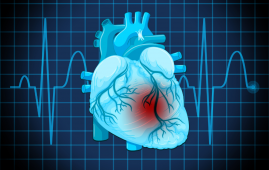

Numerous biological factors influence the development and progression of type 2 diabetes, including the body’s insulin response, the health of insulin-producing pancreatic beta cells, and biological pathways.
In a recent study published in Nature Medicine, a team led by investigators at Massachusetts General Hospital (MGH) and the Broad Institute of MIT and Harvard identified various genetic clusters involved in a wide range of biological pathways that may help explain ancestry-related differences in type 2 diabetes clinical presentations.
“Type 2 diabetes is a disease of high blood sugar that affects roughly one in every ten people in the United States, can cause serious health problems, and is seldom healed. Senior author Miriam S. Udler, MD, Ph.D., director of the MGH Diabetes Genetics Clinic and assistant professor of medicine at Harvard Medical School, says it is currently unclear why a given person develops the disease or why there is so much variation in clinical features among people with the disease.
Udler and her colleagues analyzed genomic data from over 1.4 million people with varied genetic ancestral backgrounds, including African/African American, mixed-race American, East Asian, European, South Asian, and multi-ancestry.
The analyses yielded a final set of 650 genetic variants having independent relationships with type 2 diabetes, as well as a final list of 110 diabetes-related clinical characteristics.
The scientists’ studies corroborated diabetes-associated genomic clusters discovered in a prior study. (A genetic cluster is a collection of two or more genomic regions believed to share a common biological pathways.).
The study also discovered additional genetic clusters linked to lower cholesterol levels, aberrant bilirubin metabolism (which occurs when the body breaks down hemoglobin from aging red blood cells), and inappropriate lipid processing in adipose and liver tissues.
In addition to discovering 12 genetic clusters and their biological roles that are linked to type 2 diabetes, the researchers discovered that the clusters helped to explain some of the differences in diabetes type 2 between populations.
For example, it is widely documented that people from diverse self-identified non-white populations are more likely to develop type 2 diabetes at a particular BMI.
The study’s data suggest that this disparity is at least partially explained by variations in two of the clusters that the researchers identified that relate to how the body uses and stores fat, so that individuals with certain variants in these clusters (mostly individuals from East Asian populations) face a higher risk of type 2 diabetes at lower BMI levels than other individuals.
This finding could aid clinicians in determining an individual’s desired body mass index level based on their genetic profile.
“Our study shows that the genetic underpinnings of type 2 diabetes can help explain clinical differences across populations,” says co-lead author Kirk Smith, MS, a computational biologist at MGH’s Centre for Genomic Medicine. “Also, the genetic mechanisms of disease that we have identified offer the potential to guide the development of curative therapies,” adds co-lead author Aaron J. Deutsch, MD, an instructor in MGH’s Endocrinology division.
Carolyn McGrail, Hyunkyung Kim, Sarah Hsu, Alicia Huerta-Chagoya, Ravi Mandla, Philip H. Schroeder, Kenneth E. Westerman, Lukasz Szczerbinski, Timothy D. Majarian, Varinderpal Kaur, Alice Williamson, Noah Zaitlen, Melina Claussnitzer, Jose C. Florez, Alisa K. Manning, Josep M. Mercader, and Kyle J. Gaulton are among the other authors.
More information: Kirk Smith et al, Multi-ancestry polygenic mechanisms of type 2 diabetes, Nature Medicine (2024). DOI: 10.1038/s41591-024-02865-3
more recommended stories
 Cardiac Micro-Vessels: A Novel Imaging Approach
Cardiac Micro-Vessels: A Novel Imaging ApproachUndiagnosed chest pain and heart problems.
 Osteoarthritis Cause: Vitamin E Levels Not Linked
Osteoarthritis Cause: Vitamin E Levels Not LinkedA recent study published in Scientific.
 Comparing Cancer Risk: Medically Assisted vs. Natural Conception
Comparing Cancer Risk: Medically Assisted vs. Natural ConceptionIn a recent JAMA Network Open.
 Brain Chemistry & Political Attitudes: Neural Switch Theory
Brain Chemistry & Political Attitudes: Neural Switch TheoryIn summary, a recent study uses.
 Immunosuppression Driver Found in Glioblastoma
Immunosuppression Driver Found in GlioblastomaFilippo Veglia, Ph.D., an assistant professor.
 Early Brain Development: Gene Control Atlas Unveiled
Early Brain Development: Gene Control Atlas UnveiledAn atlas of the brain’s early.
 PLS Riskier in ABO Mismatched Lung Transplants
PLS Riskier in ABO Mismatched Lung TransplantsPassenger lymphocyte syndrome (PLS) is a.
 Lysosomal Function in Parkinson’s Disease Risk
Lysosomal Function in Parkinson’s Disease RiskThe genetic traits that affect the.
 Omega-6 Fatty Acid Role in Bipolar Disorder
Omega-6 Fatty Acid Role in Bipolar DisorderHigher concentrations of arachidonic acid, an.
 Transplant Drug Shows Promise in Slowing Alzheimer’s in Seizure Patients
Transplant Drug Shows Promise in Slowing Alzheimer’s in Seizure PatientsProtein imbalances, which heighten the excitability.

Leave a Comment